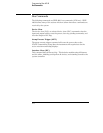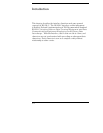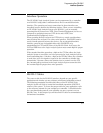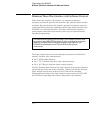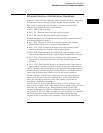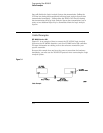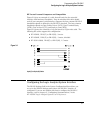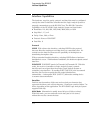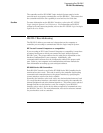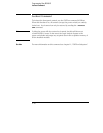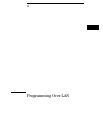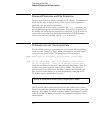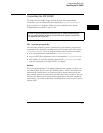
Interface Capabilities
The baud rate, stop bits, parity, protocol, and data bits must be configured
exactly the same for both the controller and the Logic Analysis System to
properly communicate over the RS-232-C bus. The RS-232-C interface
capabilities of the HP 16500C Logic Analysis System are listed below:
•
Baud Rate: 110, 300, 600, 1200, 2400, 4800, 9600, or 19.2k
•
Stop Bits: 1, 1.5, or 2
•
Parity: None, Odd, or Even
•
Protocol: None or XON/XOFF
•
Data Bits: 8
Protocol
NONE With a three-wire interface, selecting NONE for the protocol
does not allow the sending or receiving device to control data flow. No
control over the data flow increases the possibility of missing data or
transferring incomplete data.
With an extended hardwire interface, selecting NONE allows a hardware
handshake to occur. With hardware handshake, the hardware signals control
data flow.
XON/XOFF XON/XOFF stands for Transmit On/Transmit Off. With this
mode, the receiver (controller or Logic Analysis System) controls
data flow and can request that the sender (Logic Analysis System or
controller) stop data flow. By sending XOFF (ASCII 19) over its transmit
data line, the receiver requests that the sender disables data
transmission. A subsequent XON (ASCII 17) allows the sending device
to resume data transmission.
Data Bits
Data bits are the number of bits sent and received per character that
represent the binary code of that character. Characters consist of either 7 or
8 bits, depending on the application. The HP 16500C Logic Analysis System
supports 8-bit only.
8-Bit Mode Information is usually stored in bytes (8 bits at a time).
With 8-bit mode, you can send and receive data just as it is stored,
without the need to convert the data.
Programming Over RS-232-C
Interface Capabilities
3–8



